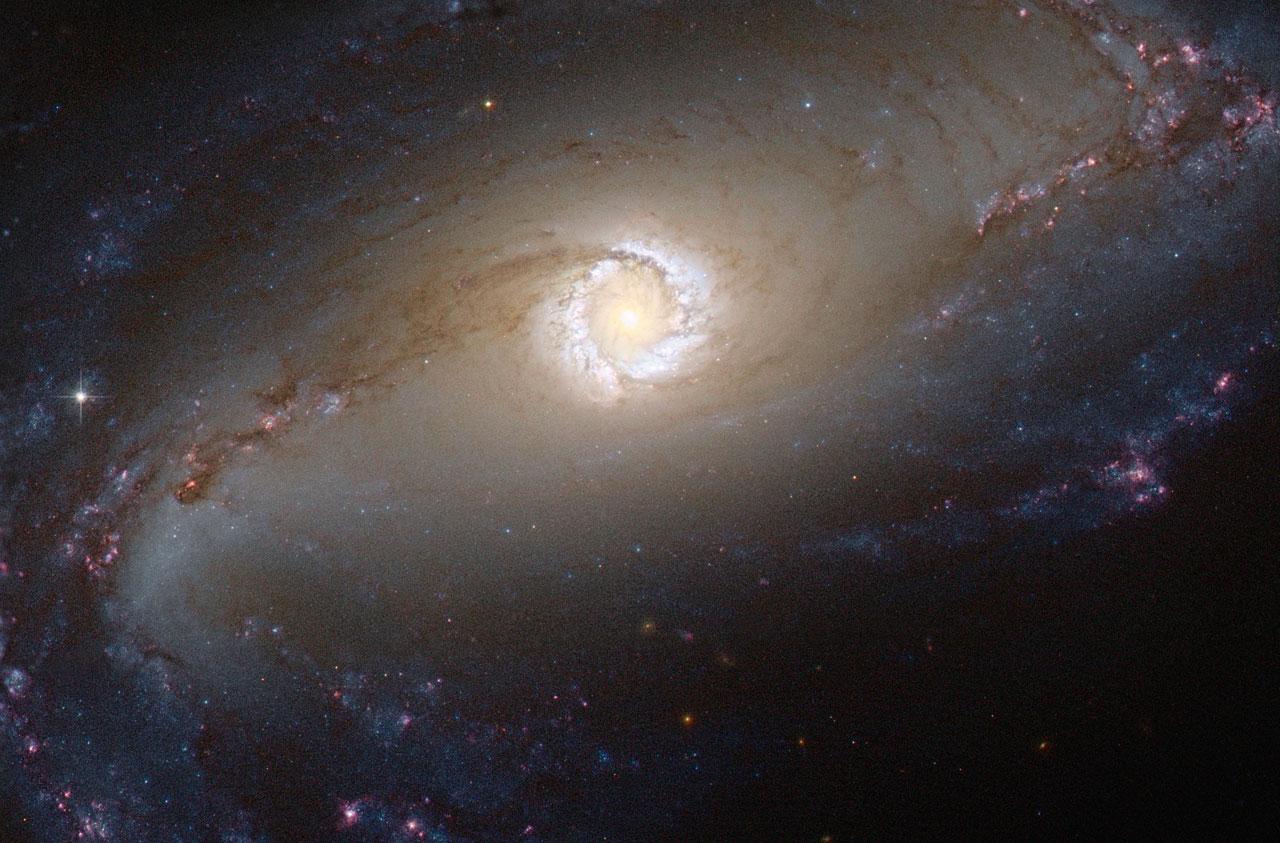The water on Earth is even older than the sun
An image of the bright star-forming ring that surrounds the heart of the barred, spiral galaxy NGC 1097.
Next time you reach for a “fresh” glass of water, think of this: some of the molecules in that water are billions of years old — older, in fact, than the solar system itself.
On the face of it, this seems impossible: how can water on Earth pre-date the solar system in which it exists? But a new study out in the journal Science concludes exactly that.
Astronomers reached this conclusion by showing that water in our solar system had to have been created within the dense cloud of gas and dust that preceded, and was the necessary condition for, the creation of the star we know as the Sun. That means the water that eventually came to Earth via “wet rocks,” such as asteroids or comets, existed before the Sun ignited and became a star.
Ted Bergin, a professor of astronomy at the University of Michigan in Ann Arbor and one of the study’s authors, calls the findings an amazing thing. “If you look back 4.6 billion years ago, there's an incredible story to be told,” he says.
At its birth, Earth was composed of minute particles, smaller than the width of a human hair. Astronomers — who, Bergin says, are “very imaginative souls,” — call this "dust."
At their distance from the Sun, these particles of dust would absorb so much energy from the Sun that they would be too hot for water to condense on them as ice. “This means that when the Earth was born, it was dry,” Bergin says. “So that's an interesting problem: Where did the water come from?”
If you think of the problem even more broadly, Bergin says, you must ask, Where did any water in the universe come from? “The universe isn't made of water, it's made of atoms," he explains. "So, at some place, at some time, those atoms came together in the universe, via chemistry, to form water.”
Fortunately, astronomers can study that chemistry in labs here on Earth. They can reproduce the conditions out of which water is formed. They do this by using what they call isotopic fingerprinting, which is essentially this: there are two types of hydrogen in the universe: hydrogen with a proton, and hydrogen with a proton and a neutron. The second kind is called deuterium. These exist in the solar system in a more-or-less fixed ratio: for every one deuterium atom, there are about 100,000 hydrogen atoms. Water incorporates hydrogen and deuterium at roughly this ratio.
“But chemistry tells us that under very specific conditions there can be an excess of deuterium," says Bergin. "That's what we call an ‘isotopic fingerprint.’ Earth has this excess of deuterium, as do comets and asteroids.”
The isotopic fingerprint occurs only at very, very cold conditions, at temperatures 10 to 20 degrees above absolute zero (-441 degrees Fahrenheit). “So, because the Earth has this excess of deuterium,” Bergin explains, “we know one thing already: that whatever the source of the water was, it was really, really cold. So now we have to look at star and planet formation and ask, ‘Where is it that cold?’”
When a star begins to form there are only two places in that massive, violent system where temperatures can be that cold: within the cloud of gas and dust that surrounds the protostar or on the accretion disk that begins to form around it. But there is one more twist: a chemical process called ionization is also necessary to create water. By looking at a detailed model of the disk, the researchers determined that the disk is incapable of powering this chemical process.
“This tells you that, of the two potential sources to make the water — the disk and the cloud of gas and dust — the disk can't do it,” Bergin explains. Therefore, the water with the isotopic fingerprint could only have emerged from the gas and dust — about a million years before the formation of the sun.
Still, this raises the question, how did this water get to Earth? Bergin says planets are formed out of the same cloud of gas and dust that eventually collapses and ignites to form a star. Rocks from within that cloud got hurled into space and collided with particles that formed Earth. Some of them didn't have water, but they hit the Earth and coalesced with it. Other rocks were hurled in our direction from even further away, and these rocks were cold enough to contain water.
“So as the Earth was being born, these rocks from greater distances supplied the water,” Bergin says. “The water became part of the rocks, and it just out-gassed via volcanoes, and that created the oceans and the atmosphere, and this wonderful planet that we have today.”
This story is based on an interview that aired on PRI's Science Friday with Ira Flatow
Our coverage reaches millions each week, but only a small fraction of listeners contribute to sustain our program. We still need 224 more people to donate $100 or $10/monthly to unlock our $67,000 match. Will you help us get there today?
